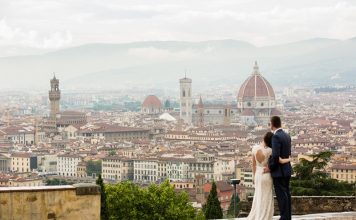Murcia is a city in south-eastern Spain, the capital and most populous city of the autonomous community of the Region of Murcia, and the seventh largest city in the country. It has a rich history, culture, and cuisine that make it a fascinating destination for travelers.
What is Murcia Known For?
Here are some of the things that Murcia is famous for:
- The Cathedral of Murcia: This is the main symbol of the city and one of the most impressive examples of Spanish baroque architecture. It was built between the 14th and 18th centuries, and combines different styles such as Gothic, Renaissance, and Baroque. The cathedral has a majestic tower that rises to 95 meters, making it the second highest in Spain. The interior of the cathedral is equally stunning, with a beautiful main altar, a golden organ, and a museum that displays valuable artworks and relics.
- The Holy Week Processions: Murcia is renowned for its religious traditions, especially during Holy Week, when the city hosts some of the most spectacular processions in Spain. The processions feature hundreds of floats that carry elaborate sculptures depicting scenes from the Passion of Christ. These sculptures are made by famous local artists such as Francisco Salzillo, who created masterpieces of realism and expressionism in the 18th century. The processions also involve thousands of participants who dress in colorful robes and hoods, and play drums and trumpets. The processions are a unique blend of art, faith, and emotion that attract millions of visitors every year.
- The Huerta de Murcia: Murcia is surrounded by a fertile plain known as the Huerta de Murcia, which is irrigated by the Segura River and its tributaries. The Huerta de Murcia is one of the most productive agricultural areas in Europe, producing a variety of fruits and vegetables such as oranges, lemons, tomatoes, peppers, artichokes, and lettuce. The Huerta de Murcia also preserves a traditional way of life that dates back to the Moorish era, when the region was known as Madinat Mursiya. The Huerta de Murcia has many charming villages, orchards, gardens, and waterwheels that reflect its rich heritage and culture.
These are just some of the things that make Murcia a remarkable city to visit and explore. Murcia has many more attractions and activities to offer, such as its museums, parks, festivals, gastronomy, and nightlife. Murcia is a city that will surprise you with its diversity and charm.
Murcia is a city in south-eastern Spain, the capital and most populous city of the autonomous community of the Region of Murcia, and the seventh largest city in the country. It has a rich history, culture, and cuisine that make it a fascinating destination for travelers. Here are some of the things that Murcia is famous for:
Famous Drinks in Murcia
Murcia is known for its wine production, especially the red wines from the Jumilla, Yecla, and Bullas denominations of origin. These wines are made from Monastrell grapes, which give them a distinctive flavor and color Some of the most popular wines from Murcia are Casa de la Ermita, Juan Gil, and Castaño.
Another typical drink from Murcia is the asiático, a coffee with condensed milk, brandy, cinnamon, lemon peel, and coffee beans. It is served in a special glass with a handle and a lid. It is said that this drink was invented by sailors who brought it from Asia in the 19th century. The asiático is very popular in Cartagena, a port city in Murcia.
Murcia also produces some liqueurs, such as the licor 43, a sweet and aromatic liqueur made from 43 herbs and spices. It is often mixed with milk or soda to make a refreshing drink. Another liqueur from Murcia is the pericana, a spicy and fruity liqueur made from peppers, oranges, lemons, and alcohol. It is usually consumed as an aperitif or digestif.
Famous Sports in Murcia
Murcia has a strong sporting tradition, especially in football, basketball, and tennis. The city has two professional football teams: Real Murcia and UCAM Murcia. Real Murcia plays in the Segunda División B, the third tier of Spanish football, and has a long history dating back to 1908. UCAM Murcia plays in the Segunda División, the second tier of Spanish football, and was founded in 1999 by the Catholic University of Murcia.
Basketball is also very popular in Murcia, with two professional teams: UCAM Murcia CB and Real Murcia Baloncesto. UCAM Murcia CB plays in the Liga ACB, the top division of Spanish basketball, and has won one Copa del Rey title in 2018. Real Murcia Baloncesto plays in the LEB Oro, the second division of Spanish basketball, and was founded in 2015 by former players of CB Murcia.
Tennis is another sport that Murcia excels at, thanks to its famous native son Rafael Nadal. Nadal is widely regarded as one of the greatest tennis players of all time, having won 20 Grand Slam titles, including 13 French Open titles. He was born in Manacor, Mallorca, but his family moved to Murcia when he was young. He trained at the Centro de Tecnificación de Tenis de la Región de Murcia (CTTRM), where he developed his skills and passion for the sport.
Famous Streets in Murcia
Murcia has many charming and historic streets that reflect its diverse heritage and culture. Some of the most famous streets in Murcia are:
- Calle Trapería: This is one of the oldest and most emblematic streets in Murcia. It was originally a street where traders sold cloth and other goods. It is now a pedestrian street full of shops, cafes, and restaurants. It also has some notable buildings, such as the Casino de Murcia, a stunning example of eclectic architecture that houses a social club and a museum; and the Palacio Episcopal, an elegant baroque palace that serves as the residence of the bishop of Murcia.
- Calle Platería: This street runs parallel to Calle Trapería and was also a commercial street where silversmiths and goldsmiths worked. It is now a lively street with many bars and pubs where people enjoy the nightlife of Murcia. It also has some interesting monuments, such as the Iglesia de San Miguel, a beautiful church with a rococo facade; and the Teatro Romea, a neoclassical theater that hosts cultural events and performances.
- Gran Vía Escultor Salzillo: This street is one of the main avenues of Murcia and connects the Plaza Circular with the Plaza Fuensanta. It is named after Francisco Salzillo, a famous sculptor from Murcia who created many religious works of art that are displayed during Holy Week processions. The street has many modern buildings and shops, as well as some sculptures by Salzillo himself, such as the Fuente de las Cuatro Estaciones, a fountain with four statues representing the seasons.
FAQs about Murcia
- What is the best time to visit Murcia? Murcia has a Mediterranean climate with hot summers and mild winters. The best time to visit Murcia is in spring or autumn, when the weather is pleasant and the city is full of flowers and festivals.
- What are some typical dishes from Murcia? Murcia has a rich and varied cuisine that reflects its agricultural and maritime traditions. Some of the typical dishes from Murcia are: zarangollo, a scrambled egg dish with zucchini and onion; michirones, a stew of dried beans with ham, chorizo, and spices; paparajotes, lemon leaves coated with batter and fried; and pastel de carne, a meat pie with puff pastry and hard-boiled egg.
- What are some fun things to do in Murcia? Murcia offers many attractions and activities for visitors of all ages and interests. Some of the fun things to do in Murcia are: exploring the historic center and its monuments, such as the Cathedral, the Almudí Palace, and the Santa Clara Monastery; visiting the museums and galleries, such as the Salzillo Museum, the Archaeological Museum, and the Museum of Fine Arts; enjoying the nature and gardens, such as the Floridablanca Garden, the Malecón Park, and the Terra Natura Zoo; and experiencing the festivals and events, such as the Holy Week processions, the Spring Festival, and the Three Cultures Festival.
See more Famous Places in Spain:
- What is Seville Famous For?
- What is Cadiz Famous For?
- What is Huelva Famous For?
- What is Caceres Famous For?
- What is Granada Famous For?
- What is Madrid Famous For?
- What is Barcelona Famous For?
- What is Valencia Famous For?
- What is Almeria Famous For?
- What is San Sebastian Famous For?
- What is Santanter Famous For?
- What is Salamanca Famous For?
- What is Oviedo Famous For?
- What is Valladolid Famous For?
- What is Cordoba Famous For?
- What is Alicante Famous For?
- What is Bilbao Famous For?
- What is Palma Famous For?
- What is Murcia Famous For?
- What is Zaragoza Famous For?














